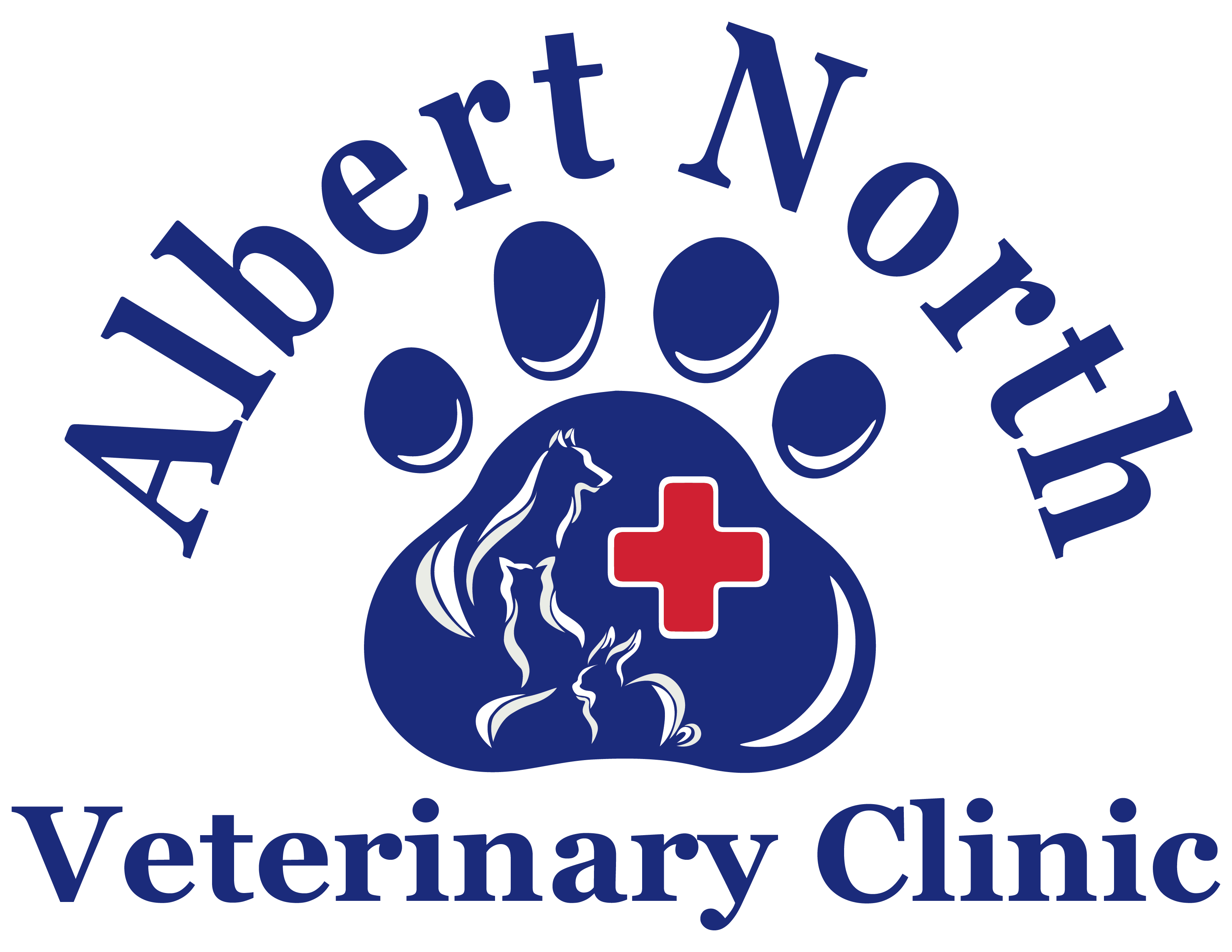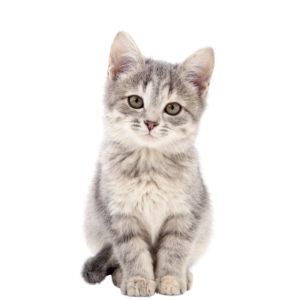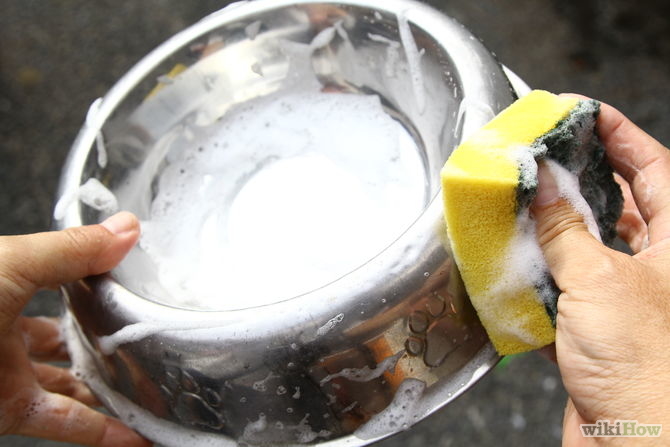In part 1 we discussed the informaion commonly found on the front of the bag and some of the marketing trends some companies use to mislead you. This post is about the information on the back of the bag.
Protein First and ‘Real’ Chicken
There is no AAFCO definition for ‘real’ chicken. When companies advertise whole chicken as the first ingredient it means the following: The clean combination of flesh and skin with bone, derived from the parts or whole carcass of chicken or a combination there of, exclusive of feathers, heads and feet. May or may not include entrails and includes all its moisture content.
Manufactures advertise that dogs and cats should be fed only animal based protein. Although most animal protein is defined as complete, the digestibility of the protein varies. Plant based proteins (such as gluten) help to round out the animal based protein profile. Dogs’ and cats’ bodies cannot distinguish between animal and plant sourced amino acids – so the source of the protein in terms of animal or plant is insignificant.
Ingredients are listed in descending order by weight. The protein source (such as chicken) is weighed before it is processed. As chicken is not rendered (a cooking process to remove fat) it has a moisture content of 75% to 85%. Therefore whole chicken has a very low nutrient density when compared to a concentrated chicken meal. Below is a chart to help explain.
Diet A advertises whole chicken as the first ingredient based on 200 kg/ton in the food.
Diet B does not have chicken as the first ingredient, but includes chicken meal (may be 3rd or 4th in the ingredient list) at 180 kg/ton in the food.
| Ingredient before Cooking | Level of Inclusion | % Moisture | % Dry Matter | Ingredient Contribution after Cooking |
| Diet A Chicken | 200 kg/ton | 85% | 15% | 30 kg/ton |
| Diet B Chicken Meal | 180 kg/ton | 6% | 94% | 169 kg/ton |
| Corn | 160 kg/ton | 11% | 98% | 142 kg/ton |
As you can see Diet A appears to have higher levels of chicken because it is the first ingredient, but this is due to the high moisture content of the chicken ao that it appears higher on the ingredient list. Once that moisture is removed it contributes less to the finished product when compared to chicken meal, which has a low moisture content. Owners think they are getting a diet with a lot of good protein when in fact they are not getting much at all. The term “meal” is not a negative. It simply means ground down and dried.
Now it is time to talk about the three scariest things in pet food, corn, wheat/gluten and by-products! Dun dun dun…….
By-Products
By products could be more accurately termed co-products. They are not the primary product being produced, so they are called by-products. If you are raising chickens for breast meat, once the breasts are removed the entire rest of the chicken is a by-product.
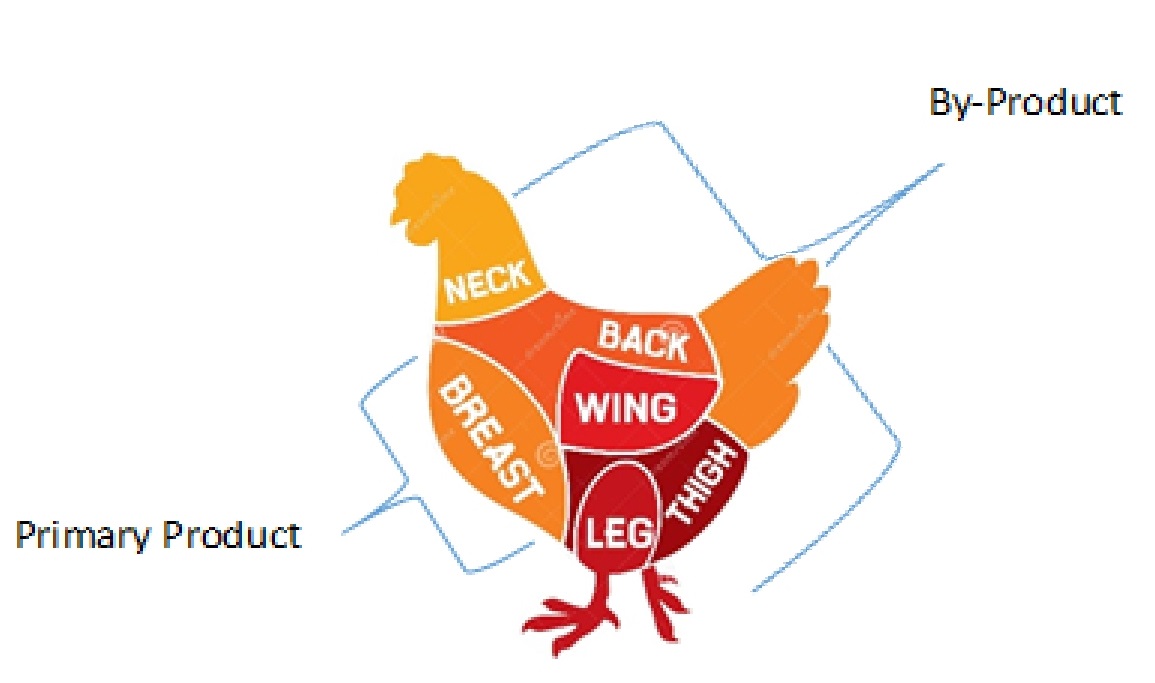
When people hear by-products they think that it is hair, hooves and feathers. At Royal Canin by-products can include heart, lung, liver, kidney, etc. Materials that are indigestible such as hair, horns, teeth, beaks, hooves and feathers are not included. Please note that by-products used by different companies can vary in quality.
Chicken wings and thighs, summer sausage and liver are all by-products that we eat. Organ meats are more nutrient dense than meat derived from muscle and are the source of important essential nutrients. Hearts for example are a good source of taurine (an amino acid needed by cats), L-carnitine and protein. Connective tissue is a good source of chondroitin, which is good for joints. Chicken meal and chicken by-product meal are identical in digestibility, nutrient profile and have virtually no visible difference. Some food companies use chicken by-product meal instead of chicken meal because there is a growing demand for chicken meat for human consumption. Companies like Royal-Canin want a sustainable protein source that is not going to impact the public. So please do not be scared when you see that there are by-products in your pet’s food.
Corn
Many people believe that corn is just a filler and has no nutritional value. This myth is completely wrong. It is true that when we eat corn on the cob you can clearly see that the outer husk was not digested. This is due to its fibrous nature. The corn inside the husk however is highly digestible. When corn is ground up into a meal it becomes even more digestible. It is like when we eat corn tortilla chips. They do not come out whole. Corn is a valuable and nutritious ingredient that provides protein, amino acids, fibre, vitamins, fat and essential fatty acids. Let us take a closer look at the many things corn provides for your pet.
- Essential fatty acids – the germ is a source of linoleic acid (omega 6 fatty acids) which promotes healthy skin and coat.
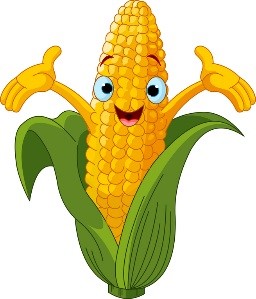
- Vitamin A – involved in healthy vision and skin regeneration.
- Vitamin B Complex – enhance immune and nervous system.
- Essential Amino Acids (such as methionine) – corn gluten is a source of amino acids which are the building blocks for protein in the body. Protein supports muscle mass, growth and immune system function. Methionine is a natural urinary acidifier which reduces the likelihood of struvite crystal and stones from forming in the bladder.
- Antioxidants – Beta carotene, vitamin E, lutein and zeaxanthin support eye health.
- Fibre and Highly Digestible Carbohydrates – It is more efficient for the body to use carbs as energy and save proteins for vital functions. When protein is used for energy it increases waste products that are excreted by the kidneys. Fibre helps with intestinal mobility and health.
- Minerals – Corn is rich in phosphorus, magnesium, zinc, copper, iron and selenium.
People also believe that many dogs are allergic to corn. Studies have suggested that corn is equivalent to or less allergenic than other protein sources such as beef. Food allergies are responsible for less than 1 % of all skin conditions.
There is also the belief that dogs are carnivores and do not do well on a diet high in grains. The definition of a carnivore is an animal that requires certain nutrients in the diet that are more commonly found in animal sources such as the amino acid taurine. It does not mean that these animals have to live solely on meat. In fact, all-meat diets are unbalanced and can lead to vitamin and mineral excesses and deficiencies. Dogs today are better classified as omnivores like us, where their bodies utilize carbs for energy before protein and do well on plant and animal diets. Cats are obligate carnivores where they need certain nutrients from animal sources such as taurine, niacin and vitamin A. Cats also use protein before carbs for energy, so cat foods should be higher in protein than dog foods. This does not mean that cats cannot use carbs or need only animal based protein. As stated earlier, bodies cannot distinguish if an amino acid is from a plant or animal source.
As you can see corn is not a filler with no nutritional value and is not a common food allergen. Corn is more of a super food that provides protein, amino acids, fibre, vitamins, fat and essential fatty acids.
Wheat and Wheat Gluten
 Gluten has been under scrutiny due to the fad of gluten free diets and more people becoming diagnosed with celiac disease and gluten sensitivity. People then look at the family pet thinking that gluten must also be bad for them. Unfortunately quite a few people do not know what gluten actually is.
Gluten has been under scrutiny due to the fad of gluten free diets and more people becoming diagnosed with celiac disease and gluten sensitivity. People then look at the family pet thinking that gluten must also be bad for them. Unfortunately quite a few people do not know what gluten actually is.
Wheat gluten specifically refers to the protein portion of the grain. To obtain it, the flour and the bran components of the whole grain are separated. To release the germ from the gluten, the wheat is first steeped and then ground. It is then spun in a centrifuge to separate the gluten and the starch. The gluten is then dried into a powder and this form is used in pet food.
Wheat gluten is a valuable protein source that has been shown to have a 99% digestibility by the small intestine. This minimizes the delivery of undigested proteins to the large bowel, thereby improving stool quality, reducing fecal odour and flatulence. Plus it also can reduce the amount of stool you have to pick up.
Wheat gluten also has an amino acid profile that complements meat protein profiles. Wheat gluten is low in saturated fats, cholesterol and sodium.
Gluten is made up of many different proteins. The two main groups are the gliadins and the glutenins. Celiac disease is an 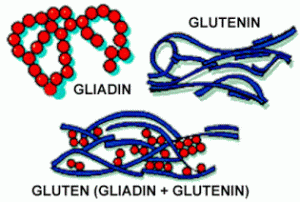 autoimmune disorder found in individuals who must avoid gliadin, a glycoprotein found in gluten sources such as wheat, rye, barley and sometimes oats. Celiac disease is serious for those affected, but it is generally well controlled by avoiding consumption of gliadin. Celiac disease is a relatively uncommon condition that affects less than 1% of the population. This is a human disease and is not found in pets.
autoimmune disorder found in individuals who must avoid gliadin, a glycoprotein found in gluten sources such as wheat, rye, barley and sometimes oats. Celiac disease is serious for those affected, but it is generally well controlled by avoiding consumption of gliadin. Celiac disease is a relatively uncommon condition that affects less than 1% of the population. This is a human disease and is not found in pets.
Gluten sensitive enteropathy is a disorder of the small intestine that results from an intolerance to gliadin. It is not a food allergy to gluten. Consumption of wheat gluten is not a risk factor for developing the disease. It is a very rare disease that only affects certain breeds such as the Irish Setter. For the rest of the pet population wheat gluten is a wonderful source of nutrition.
Comparing Diets
Now that we have had a look at some items you may see in the ingredient list and cleared up some myths and misconceptions there is one last item I would like to address. How do you compare diets?
| Crude Protein | Min. | 40% |
| Crude Fat | Min. | 14% |
| Crude Fiber | Max. | 3.5% |
| Moisture | Max. | 6% |
| Calcium | Min. | 1% |
| Phosphorous | Max. | 0.55% |
| Magnesium | Max. | 0.16% |
| Taurine | Min. | 0.30% |
The guaranteed analysis provides information on the levels of protein, fat, fibre, and moisture in the formulation. This is on an “as fed” basis and only provides information on the maximum and minimum levels of nutrients. It is impossible to compare diets based on the guaranteed analysis because you do not know the exact levels. The food can literally range anywhere within the provided ranges.
A typical analysis or nutrient composition table is necessary to compare diets. The analysis gives a specific nutrient level instead of the max/min levels in the guaranteed analysis. Some companies cannot give you a nutrient table or typical analysis because their diets fluctuate frequently due to what ingredients are available through their manufacturing plant.
The best way to compare diets is to look at the level of nutrients based on the calorie or nutrient density of the diet. If diet A says to feed 2 cups for a 10kg dog and diet B says to feed 1 & ½ cups then diet B would be the better choice. Some companies sell you a big bag of food for a low cost, but you have to feed more than a higher quality diet equaling a higher cost overall.
I hope this information has helped to clear up some misconceptions and helped in educating you in some common marketing tactics. I wish I could just give you a list of diets that are good for your pet and which are bad. If you keep in mind that there is a pyramid when it comes to pet food. Grocery store diets are good, pet store diets are better and veterinary exclusive diets are best.
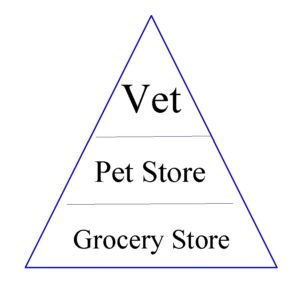
For some companies it is their job to sell you food and some of them are excellent at it. Try to not get tied up in the hype and fancy commercials. Also, “if it ain’t broke, don’t fix it”. If your pet is doing well on their current diet and their weight is good, skin and coat is healthy and they are having good bowel movements then the diet you are on is most likely fine. But if your pet is having problems such as skin/coat, joint, urinary or weight problems, your veterinary staff is there to help you. Extensive research and quality control go into making veterinary exclusive diets. For more information about the research and quality control that goes into these diets please read my blog post called ‘My Tour of Royal Canin’.
I would like to leave you with one last piece of advice. Remember to regularly wash your pet’s dishes with soap and water and rinse thoroughly. Remaining food particles attract bacteria and insects. Stay healthy out there.
